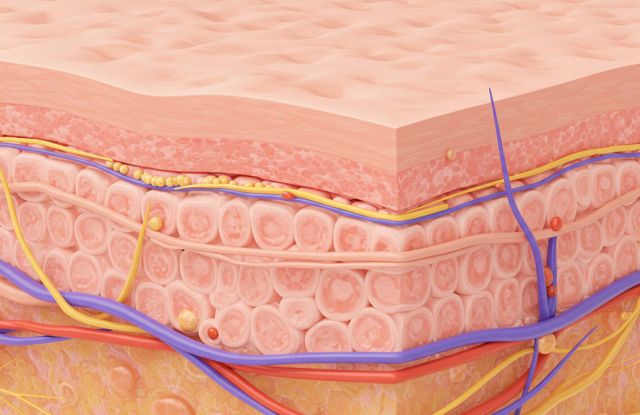
Gynaecologists’ Perspectives on Labia Stretching
Once seen primarily as a traditional practice in parts of Africa, labia stretching is quietly making its way into new spaces. In diaspora communities, some women embrace it to remain connected to their heritage. Others, with no cultural ties, are exploring it as a form of body modification, body awareness, or intimate enhancement. This shift is creating new questions—not only for women who practice it, but also for the gynaecologists who are asked to weigh in.
From Tradition to Trend
Traditionally, labia stretching has been part of a woman’s initiation into adulthood, often guided by family elders. Now, the practice is being reinterpreted by women living far from those cultural origins. Some describe it as a way of honoring ancestry. Others approach it with curiosity, drawn by online discussions, body-positive forums, or the growing visibility of intimate body practices in global wellness conversations.
For some women, it is similar to choosing a tattoo or piercing—an intimate modification of the body that reflects personal values or aesthetics. For others, it is deeply meaningful, a way of keeping alive practices that risk being forgotten outside of their homelands.
Why the Interest Is Growing
Several factors contribute to this rising popularity:
-
Global Conversations on Intimacy – With more open discussions about vulval health, aesthetics, and sexuality, practices once considered private are finding new visibility.
-
Diaspora Communities – Women living abroad often describe labia stretching as a link to family traditions, a way to stay connected to cultural identity.
-
Body Customization – Just as cosmetic surgery or piercings have become mainstream, labia stretching is being framed by some as a form of personal expression.
-
Intimate Curiosity – Online forums allow women to share experiences and outcomes, sparking interest among those who may never have encountered the practice before.
How Gynaecologists Approach the Subject
For gynaecologists, this wider adoption of labia stretching presents a delicate task: to support women with accurate information while respecting personal and cultural motivations.
Acknowledging Normal Anatomy
The first reassurance many gynaecologists give is that all labial shapes and sizes are medically normal. Stretching changes appearance, but it does not make the body more “correct.” Women considering the practice are encouraged to start from a place of acceptance rather than dissatisfaction.
Safety Guidance
Because the practice is often carried out privately, gynaecologists emphasize hygiene and gentleness. They caution against improvised tools or forceful methods, explaining that such approaches can lead to irritation, small tears, or infection. Many suggest that gradual stretching, done with care, minimizes risks.
Health Outcomes
The medical literature on labia stretching remains limited. While some women report increased sensation or enhanced sexual experiences, gynaecologists highlight that results vary greatly. Importantly, labia stretching is not necessary for health, but when practiced thoughtfully, it does not appear to carry significant long-term harm.
| Aspect | Gynaecologists’ Notes |
|---|---|
| Normal Anatomy | Labia vary naturally; all shapes are normal. |
| Safety | Gentle and clean practice minimizes risks. |
| Sexual Function | Some report changes, outcomes vary individually. |
The Changing Conversation
In clinics, gynaecologists are noticing that conversations about labia stretching are more frequent than in the past. Women are not only asking whether the practice is safe but also sharing personal reasons for trying it. For doctors, this creates an opportunity to listen without judgment and to frame their guidance around safety, choice, and self-understanding.
Gynaecologists should be prepared for the reality of mass immigration to Western nations, which means treating new patients from various African communities whose heritage includes the practice of labia stretching.
It is essential that doctors approach these examinations with non-judgment and cultural sensitivity, acknowledging that elongated or stretched labia may be a natural result of a practice deeply rooted in the patient's traditions and cultural identity. This approach ensures respect for the patient's heritage and promotes better overall healthcare.
Looking Ahead
As labia stretching becomes more visible outside its original cultural settings, it will likely continue to spark discussion in medical circles. Some gynaecologists anticipate future research, particularly as more women openly share their experiences. Others suggest that, like many intimate practices, it will remain highly personal and not universally adopted.
A Gentle Closing Thought
Labia stretching today sits in an evolving space—part heritage, part personal exploration, part intimate self-expression. For women, it represents both continuity and choice. For gynaecologists, it offers an opportunity to guide with compassion, to respect tradition while ensuring health, and to remind women that their bodies are already whole and worthy, no matter the path they choose.
Questions & Answers
Q: Is labia stretching medically necessary?
A: No, it is not necessary for health. It is a personal or cultural choice.
Q: Are there risks involved?
A: When practiced gently and with clean hands, risks are minimal. Forceful or unhygienic methods may cause irritation or infection.
Q: Can stretching affect sexual function?
A: Some women report changes in enhanced sensitivity, but experiences differ greatly from person to person.







